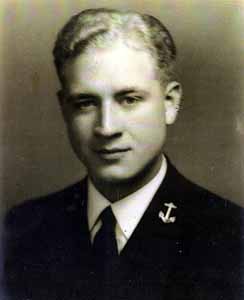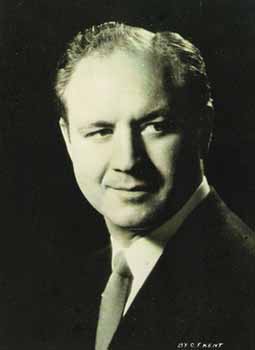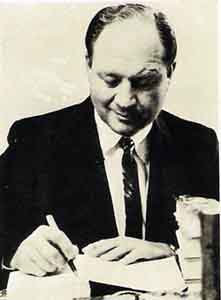Major Works
- The Tragic Art of Ernest Hemingway (non-fiction) (1982)
- The Far Side (1972)
- The Trojans (1966)
- A Passage of Hawks (1963)
- Ada Dallas (1959)
- Love in a Windy Space (1957)
- The Enemy (1951)
Wirt Williams: A Biography
by Alan Boyle (SHS)
With additional information added by the family of Wirt Williams
Wirt Alfred Williams, Jr., who had three novels nominated for the Pulitzer Prize, was born on August 21, 1921, in Goodman, Mississippi, in an apartment in a dormitory on the campus of what later became Holmes Junior College at the time when it was an agricultural high school with living facilities. According to Wirt Williams’s sister Catherine Colton Williams Graves, their “father was head of the school, and he and his wife occupied the apartment as manager/ chaperones for the students living there. They made very little money in those days, and the apartment was a real plus for them.

Wirt Williams on New Year’s Day in 1986. The photo was taken six months before his death at the age of 64.
Wirt Williams, who was raised in Cleveland, Mississippi, became interested in writing when he was very young. His desire to write was highlighted at the age of eighteen when he read Ernest Hemingway’s collection of short stories, In Our Time. He attended Delta State University in Cleveland, Mississippi, where he received a bachelor’s degree in English and American literature. During his spare time, he occasionally taught classes for his father, who was the head of the social studies department at Delta State. He received a master’s degree from Louisiana State University in journalism in 1941 and joined the navy the next year.

Wirt Williams at the time he was commissioned an ensign in the United States Navy during World War II. He later retired as a Lt. Commander in the Naval Reserve.
Photo courtesy of Williams’ sister Catherine Williams Graves
Wirt’s sister Catherine adds this information about Wirt’s Navy service: “Wirt was on duty as an officer on a destroyer chasing German subs in the North Atlantic. The United States had been slow in responding, and the museum at Cape Hatteras said that more than 400 U.S. vessels were lost before they could effectively respond. Many were lost in the Hatteras area. Wirt’s ship, the U.S.S. Decatur, went out on these runs to find and sink the subs and then return, usually to New York or Boston for refueling and supplies. Wirt considered this job good duty because the men had good food and got into those ports for r & r.”
“As it was obvious the U.S. was going to have to go after Japan in the Pacific, he (Wirt) was transferred to an amphibious ship, an LSM, and sent to the South Pacific. When the U.S. was planning to attack Japan, a great armada of ships gathered at Okinawa to get ready for the attack. Wirt told his signalman that if he ever saw LCI(G)24 (landing craft infantry, gunboat 24) to signal it. They saw the gunboat in all that mass of boats one day and sent a boat over to bring Ranny (Wirt’s brother) to Wirt’s ship where they had dinner and a little visit before they would all head to Japan. There was never any invasion because the U.S. dropped the atomic bomb and that brought an immediate surrender by Japan. Ranny’s LCI had the G on it because it had been converted from a regular landing craft to a gunboat which ran in and tried to clean out any pockets of the enemy. Ranny was awarded a bronze star, but he never told any of his family. Elizabeth found the information on his discharge record and also on an old uniform ribbon.”
After serving his term in the Navy, Williams worked as a reporter for the Shreveport Times and as a writer for the New Orleans Item. For his reporting, Williams won a Pulitzer Prize nomination, a Heywood Brown Newspaper Guild Award, and the ABC Award. In 1953 he returned to school and received a doctorate in English from the University of Iowa. He then began to teach in the English department at California State University at Los Angeles. In all, Williams wrote six novels in his career. Although he may not be as well known as some other writers, three of his books (The Enemy (1951), Ada Dallas (1959), and The Far Side (1972)) were nominated for a Pulitzer Prize. In 1961, Ada Dallas was turned into a motion picture called Ada by MGM. Wirt Williams also wrote one non-fiction work entitled The Tragic Art of Ernest Hemingway, which was published in 1982. Other novels by Wirt Williams are The Trojans, A Passage of Hawks, and Love in a Windy Space.
Wirt Williams died of a stroke on June 29, 1986, at the age of sixty-four.
Timeline
- 1921 – born in Goodman, Mississippi
- – -moved to Cleveland, Mississippi, where he grew up
- 1940 – received BA degree in English at Delta State University
- 1941 – received MA in journalism
- 1942 – joined U. S. navy
- 1946-1949 – worked as reporter, writer, researcher, and city editor for New Orleans Item
- 1949 – won Heyward Brown Newspaper Guild Award
- 1949 – won ABC Award
- 1951 – The Enemy published
- 1953 – received a Ph.D. in English from University of Iowa
- 1957 – Love in a Windy Space published
- 1959 – Ada Dallas published
- 1961 – MGM production of Ada based on Ada Dallas
- 1963 – A Passage of Hawks published
- 1966 – The Trojans published
- 1972 – The Far Side published
- 1982 – critical study called The Tragic Art of Ernest Hemingway released
- 1986 – dies at the age of 64
Letter from Wirt Williams’ sister Catherine Williams Graves:
“Thanks so much for your interest in our brother Wirt. I wish you could have known him …he had a great sense of humor and was fun to be around, along with being extremely intelligent. We still miss him.
Wirt, our brother Ranny (Randolph Rayner Williams), and I (Catherine Colton Williams Graves) all spent our formative years in Cleveland, MS. We were blessed to have a wonderful high school there, and then all three of us got our bachelor’s degrees in Cleveland before we moved on to graduate or professional schools. Our father, Wirt, Sr., came to Cleveland when Delta State was founded and he was the first chairman of the history department.
Even when he was a teenager, Wirt was a writer–he worked as a stringer for the Delta Democrat Times, the Jackson Daily News, Memphis Commercial Appeal and several other papers beginning when he was 15 years old. He went to LSU and earned a Master’s degree in journalism (he is in the school’s Hall of Fame) Then came World War II…I won’t go into that since I believe my son Randy Graves has already sent what I gave him about Wirt’s time in the Navy.
When the war was over, Wirt returned to New Orleans to be a reporter and editor on the New Orleans Item daily newspaper. He had always loved journalism, but he began to gravitate toward a different type of writing, and he was drawn to the renowned creative writing program at the University of Iowa….Three years later with a Ph.D. in creative writing, he was recruited by California State University at Los Angeles and spent the rest of his career teaching at the California school combining the two fields. He had just retired there in 1986 when he was hit by a stroke and died at the age of 64.
Wirt always had a special spot in his heart for Mississippi. He never forgot the happy days and life-long friends of his childhood and youth in the Delta. He returned to Cleveland as often as he could to touch base with family and friends in the gracious atmosphere of the Delta.”
————————–
Catherine Graves (Williams’ sister) also tells this story: “When I was working in marketing for the Parkview, we had prospects to lunch frequently. One day I had a dear old lady from Mississippi who told me she was a student at the school and lived in that dormitory when my parents were supervising it. She was there when Wirt was born, and she said the students were so excited that Miss Nina and Mr. Wirt were having a baby there that night. The students were all thrilled because the Williamses had been married several years and had no children. Interestingly, Blanche Shrock (Wirt’s 92 year old cousin) tells the story that she was mad because my parents Wirt and Nina had been so good to her. She thought Wirt, Jr., was taking her place, but she soon got over it because everybody loved Wirt. Blanche remembers that Wirt and Nina once took her to New Orleans on the train–a memorable event in her childhood.”
Reviews
A Review of The Enemy
by Alan Boyle (SHS)
In Wirt Williams’ first novel, he portrays an excellent image of the mind sets of the ‘hunter’ and the ‘hunted’. The Enemy tells the story in first person of a U.S. sailor who is on a mission to hunt and destroy submarines. With great attention to detail, Williams throws the reader deep into the mind set of a sailor and the problems he has to face every day.
The story starts in early World War II aboard a four-stack destroyer. These destroyers are quickly being replaced by the modern equivalent and the Dee, the ship on which the story is set, is one of four four-stack destroyers remaining. The crew is not notified of their orders until they have set sail. This is a strange procedure, and no one on board has experienced it before. After the ship leaves and refuels, the captain tells the officers on board the orders.
The orders are to seek and destroy German U-boats. The Dee is assigned to Task Unit Twenty-One Point Thirteen Point Nine. Its assignment is to protect an aircraft carrier along with two other destroyers while searching for submarines. To search, the destroyers are equipped with new radar and sonar technology. This technology, along with depth charges, torpedoes, and air cover, is the only defense that they have from the submarines. As the mission progresses, the orders seem harder to follow than originally thought. The clusters of submarine sightings that are investigated return no trace of submarines. The task unit searches thousands upon thousands of square miles of water and find nothing. The crew on the Dee, however, is constantly called to general quarters because of false alarms. The attention to detail begins to slowly fade as the trip wears on. Finally, one of the destroyers in the task unit is sent to investigate four surface contacts, and this destroyer is destroyed. The Dee is sent to investigate and finds that the submarines had set a trap by making fake surface contacts. The hunted had become the hunter. In a quick skirmish between the Dee and at least three submarines, the Dee is damaged, but it also damages a submarine. The damage to the Dee is only minimal, however, and it returns to port safely.
In The Enemy, Williams forces the reader to look deeper into conflict to see the true enemy. The lines between the hunter and the hunted become interchangeable as the conflict progresses. Williams shows how crossing these lines affects crew members in ways they express openly and in way that they are afraid to express. I recommend this book to anyone who enjoys a good historical fiction novel that keeps very close to the truth.
Related Websites
- Elmo Howell’s book Mississippi Scenes includes photo of Wirt Williams’s childhood home near Delta State and an excerpt from Gay Chow’s biography of Williams.
- Wirt Williams, 64; Novelist Nominated for Pulitzer Prize 3 Times. Los Angeles Times, 1986.
Bibliography
- May, Hal. Contemporary Authors. Vol 119. Detroit, MI: Gale Research Company, 1987.
- Kibler Jr., James E. Dictionary of Literary Biography. Volume 6: American Novelists Since World War II. second series. Detroit, MI: Gale Research Company, 1980.
Return to Top



